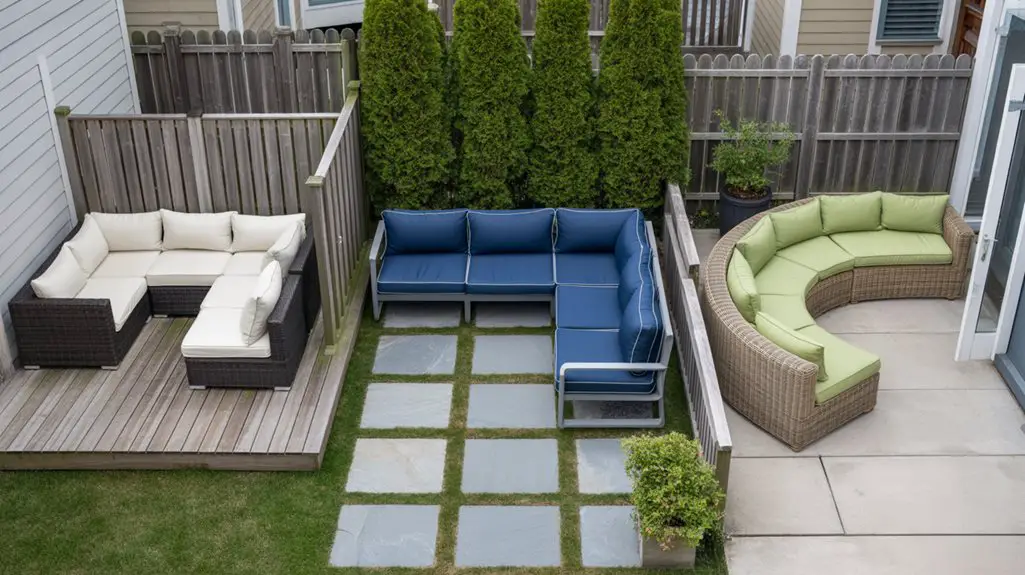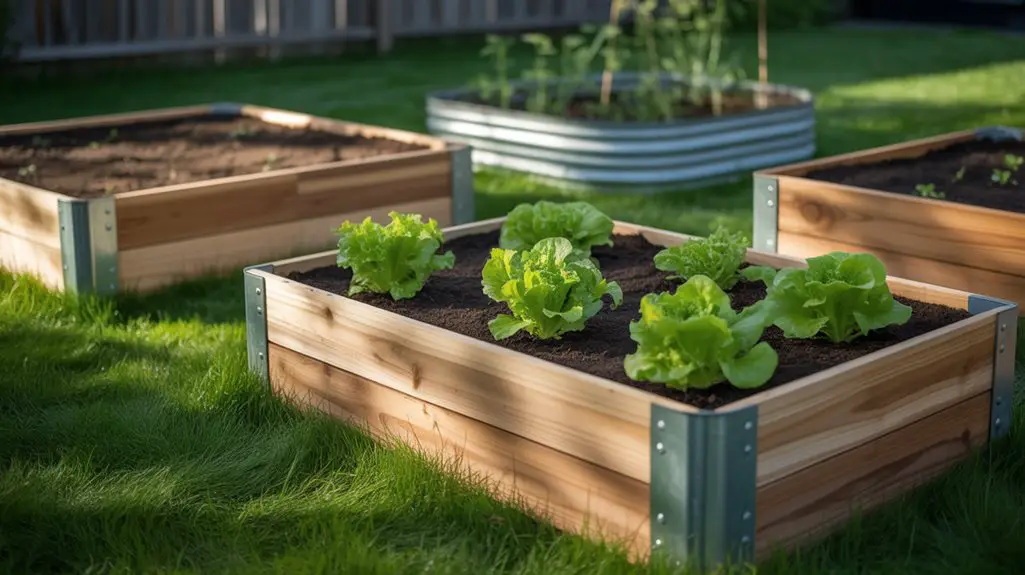Are you looking to create a great outdoor space for your family and friends?
A bocce ball court with artificial turf is the perfect way to do just that!
Not only is this a great way to get your family and friends together, but it’s also a safe and secure way to have fun.
With an artificial turf bocce ball court, you can enjoy the game without having to worry about dangerous conditions or hazards. In this article, we’ll explain how to build an artificial turf bocce ball court in three easy steps.
Building an artificial turf bocce ball court doesn’t have to be difficult or expensive. With the right tools and materials, you can construct a professional-looking court in no time.
The synthetic grass provides an even surface that won’t be affected by weather conditions or foot traffic, making it perfect for long-term use. Not only that, but it’s incredibly durable and requires very little maintenance. You’ll never have to worry about mowing or watering again!
Once you’ve got your artificial turf installed and leveled out, you can start playing bocce ball right away! Bocce ball is a traditional Italian game that’s been around for centuries, so it’s sure to provide hours of fun for everyone involved.
Whether you’re playing casually with your friends or getting competitive in tournament play, building a bocce ball court with artificial turf will give you years of enjoyment.
So let’s get started!
History Of Bocce Ball

Bocce ball is a game that has been around for centuries and is still beloved today. While some may dismiss it as an old person’s game, bocce ball remains timeless and provides boundless fun.
According to regulation courts, the size of a bocce court can range from sixty-six to ninety feet in length and ten to thirteen feet in width. The regulation court itself should also be shaped like a rectangle with a flat surface so the balls can bounce correctly.
The nature of the game is simple enough; players toss their bocce balls towards the smaller pallino ball in an attempt to get closest. Although this might sound easy, there is far more skill involved than most people realize. This makes bocce ball even more enjoyable when mastered.
Not only does it provide endless hours of entertainment, but playing bocce ball with friends or family can bring people closer together outdoors. Building your own artificial turf bocce ball bounce court allows you to experience all these aspects on your own terms.
Now that we’ve gone over the fun facts about the history of bocce ball, let’s discuss the rules and regulations for building your own court.
Rules And Regulations for Bocce Ball
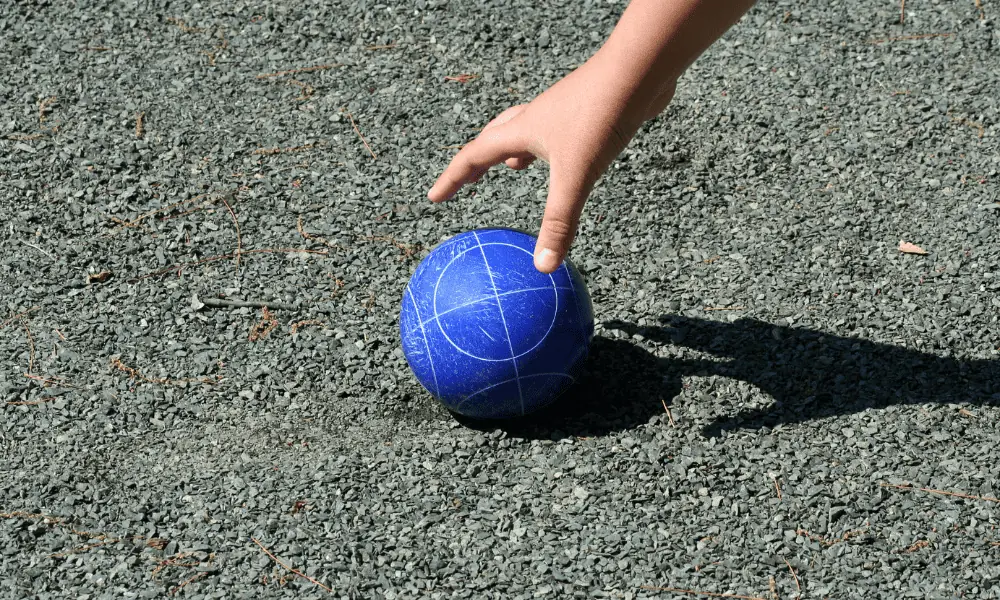
Before building a bocce ball court with artificial turf, it’s important to understand the rules and regulations associated with the game.
The size of the court is paramount in determining the type of gameplay; for instance, a regulation play bocce ball court must measure between 60 to 90 feet long and 8 to 13 feet wide.
Plus, any playing surface must be level and should have line markings for delineating foul lines, as well as sidelines and centerlines
An artificial turf is an excellent option for constructing a bocce ball court because it requires little maintenance, and its longevity can withstand weather conditions. Furthermore, if using artificial turf, turf paint should be used to mark the dimensions of the court.
When building a bocce ball court with artificial turf, it’s also important to consider what equipment will be necessary.
Several components make up a complete set; these include eight bocce balls – four each in two different colors – and one small target or pallino ball, which is usually white in color.
Also, players need something on which to stand while throwing their balls, a smooth surface such as a rubber or plank matting which helps reduce slipping or sliding when releasing balls onto the playing surface.
Safety is paramount when constructing any type of sporting facility, so it’s essential that all safety considerations are taken into account before beginning any construction project.
This includes ensuring there are no sharp objects around the perimeter that could potentially injure players during gameplay; likewise, any man-made objects, such as posts or poles, should remain out of bounds at all times.
Given these points regarding rules and regulations for constructing a bocce ball court with artificial turf, designing the court’s dimensions and layout becomes an essential next step in creating an enjoyable space for bocce lovers everywhere.
Designing The Bocce Ball Court Layout
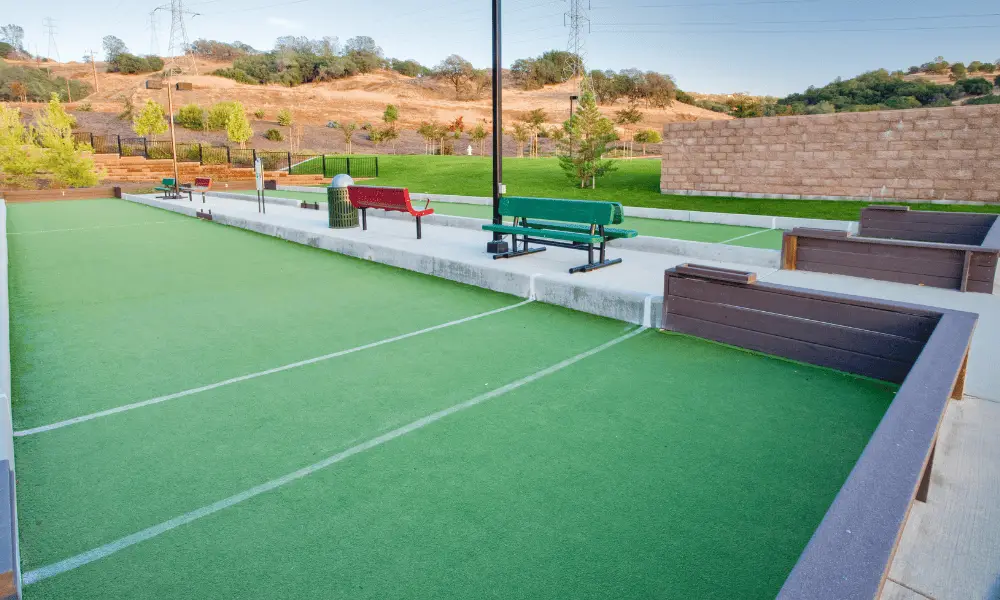
The first step in building a bocce court project is designing the court layout.
To create a playing field that’s both challenging and aesthetically pleasing, it’s important to give thoughtful attention to the field’s shape and size.
With this in mind, here are several steps to consider when laying out your artificial turf bocce court:
- Measure and mark the area: Use a tape measure to determine the overall dimensions of your court. Mark off the lines for the boundaries using spray paint or chalk, then use a circular saw to cut the lines into the artificial turf.
- Create weep holes: Weep holes allow excess water from rain or irrigation systems to drain away from your court. Create these holes by digging small trenches along the edges of your bocce court, then fill them with gravel and sand.
- Level out any bumps or depressions: Smooth out any high or low spots in your playing field using a rake, shovel, or power trowel. Make sure there are no uneven surfaces that could affect gameplay.
When you have finished designing your bocce court layout, you’re ready to move on to setting up the play area.
Setting Up The Bocce Ball Play Area
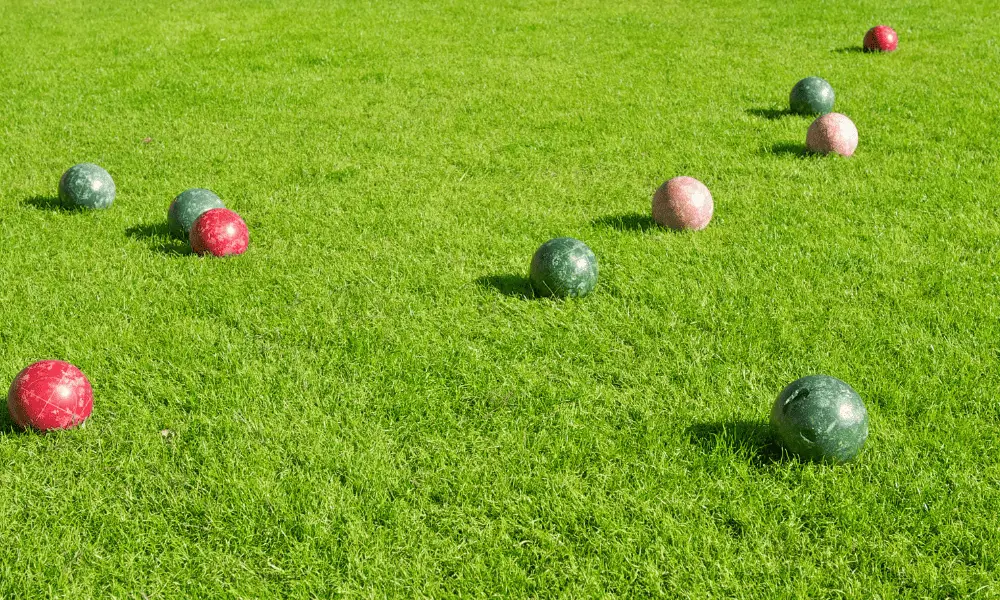
Setting up a bocce ball court with artificial turf is an exciting project that can bring hours of fun and enjoyment. Building the play area is not difficult; with the right materials and tools, anyone can create a safe and beautiful bocce ball court.
First, decide on the size of your bocce ball court. Artificial grass or synthetic turf comes in various sizes for a variety of different applications.
Once you have settled on the dimensions, lay down the turf and secure it to the ground using stakes or sod staples. This will ensure that your bocce ball court remains level and won’t shift over time.
Next, create a border around your bocce ball court for additional stability and aesthetics. If you choose to use bricks or other materials that are not permeable, make sure to leave enough space between them and the turf to allow for drainage during wet weather conditions.
This will help protect your court from damage due to flooding or pooling water.
Finally, fill in any gaps between the turf and border with soil or sand before enjoying your newly built bocce ball court!
With proper installation, you can expect years of entertainment in this safe and secure play area. It’s now time to explore non-infilled installation options available for building your court!
Non-Infilled Installation Options
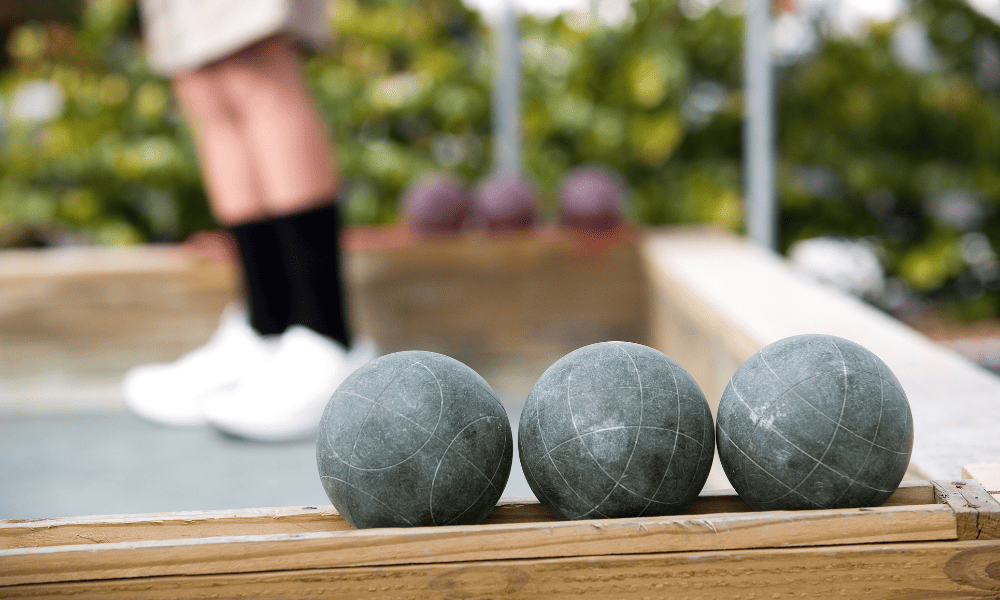
The time has come to start building your very own bocce ball court with artificial turf. Let’s look into the non-infilled installation options.
| Option | Description |
|---|---|
| Concrete Base | If you’re installing your bocce ball court in an area that receives heavy rains, you may want to consider adding a French drain and weep holes to help keep water from pooling on the surface of your court. This will help ensure that your court remains playable even during wet weather conditions. |
| Artificial Turf Bocce | Artificial turf bocce is explicitly made for bocce courts and is installed directly on top of the concrete base without any infill materials. The turf provides cushioning and stability, making it an ideal choice for those looking to get the most out of their court. It also requires minimal maintenance and can be used year-round. |
| French Drain & Weep Holes | If you’re installing your bocce ball court in an area that receives heavy rains, you may want to consider adding a french drain and weep holes to help keep water from pooling on the surface of your court. This will help ensure that your court remains playable even during wet weather conditions. |
These are just a few of the non-infilled installation options when it comes to creating your very own bocce ball court with artificial turf. Each option offers its own unique benefits and drawbacks, so it’s important to do some research before making your decision.
Now let’s move on to selecting artificial turf materials that best fit your needs and desires.
Selecting Artificial Turf Materials for a Bocce Ball Court

When building a bocce court with artificial turf, selecting the right materials is key.
Synthetic grass is the best for a bocce court surface with artificial turf because it provides excellent traction and allows players to enjoy their game safely.
Here are three things you should look for when selecting the right synthetic grass for your bocce ball court:
- A top layer: The top layer should be smooth and comfortable to walk on, as well as provide a good surface for rolling the balls.
- Durability: Look for synthetic turf that can withstand hours of play without showing signs of wear and tear.
- Easy maintenance: Artificial turf is low maintenance, but it still needs occasional care to keep its appearance and integrity intact.
Choose a synthetic grass that meets all these criteria, and you’ll have an optimal playing surface for your bocce court that will last for years to come. From here, we can move on to discussing different types of court surfaces.
Types Of Court Surfaces
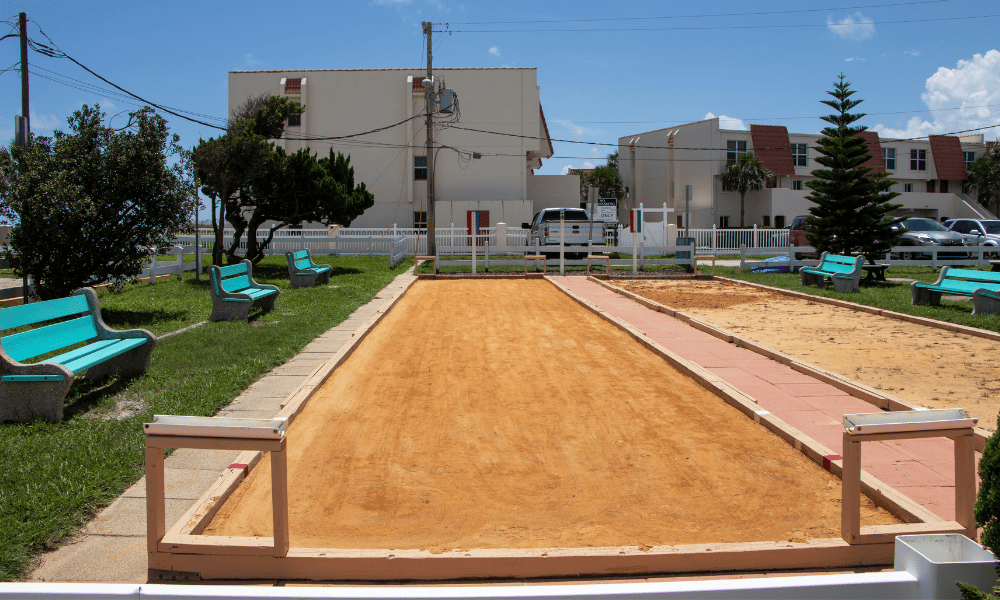
A bocce ball court is an attractive way to bring friends and family together for a friendly game.
If you’re looking to build your own bocce ball court, one of the most important steps is selecting the right type of surface material.
Artificial turf is becoming increasingly popular as a surface material for bocce ball courts due to its durability and low maintenance costs.
The table below outlines some of the key advantages and disadvantages of using artificial turf on your own bocce ball court:
| Advantages | Disadvantages |
|---|---|
| Durable & long-lasting | Costly upfront investment |
| Low maintenance costs | Not ideal for cold climates |
| Easy to install & maintain | Potential drainage issues |
| Natural look & feel | Not suitable for tournaments or competitions |
When deciding on which type of surface material to use for your bocce ball court, it’s important to consider both the pros and cons. Artificial turf can be a great choice if you’re looking for a durable and low-maintenance option.
However, it may not be ideal if you plan on playing competitively or in cold climates. Either way, artificial turf can provide you with a reliable surface when playing a game of bocce balls with friends and family.
No matter what type of surface material you choose, having your own bocce ball court can create countless memories that will last a lifetime. Visualizing the court with a gallery of images or sketches can help you get started with building your own court today!
Visualizing The Court With A Gallery

Creating a beautiful bocce court with artificial turf is a great way to bring your outdoor space to life.
Here’s what you’ll need to visualize the court and make it come alive:
- A regulation-size bocce court – Bocce courts can vary in size, but they should typically be at least 60 feet long and 10-13 feet wide.
- Short grass – Artificial turf is an excellent choice for a bocce court as it will last longer than natural grass. It also looks better and allows for easier maintenance.
- Public spaces – If you’re looking to add a bocce court to your public space, make sure that there is enough room for people to play without blocking walkways or other areas of the park or playground.
- Build a bocce ball court – To create the perfect court. You’ll need to build the frame and fill it with sand, gravel, or soil before laying down the artificial turf. Once completed, you can enjoy hours of fun playing in your new backyard oasis!
A well-designed bocce court not only adds beauty to any outdoor space but also provides an opportunity to bring people together for friendly competition and camaraderie.
With some creative thinking and attention to detail, you can transform any area into a regulation-size oasis perfect for backyard tournaments or casual games of bocce ball.
Being able to visualize the final outcome before beginning construction will help ensure that all aspects of the project are taken into consideration when putting it together.
Moving forward, applying the finishing touches will take this project from concept to reality!
Applying The Finishing Touches
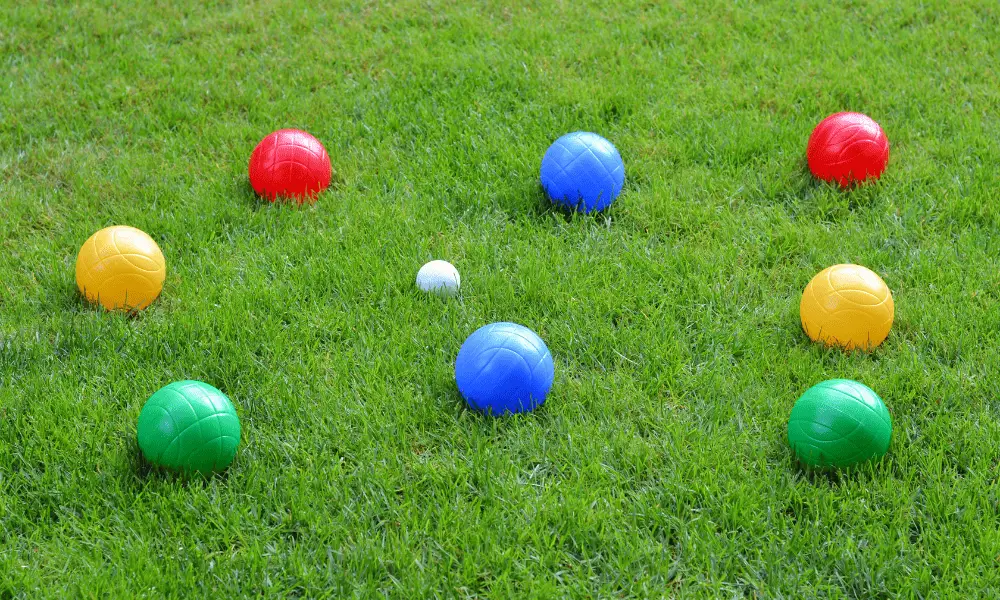
Once you’ve built the court, it’s time to add the finishing touches. To make your bocce ball court family-friendly and ready for a game, start by laying out all the balls.
Bocce is a game traditionally played by two teams of one, two, or four players, so make sure there are enough balls for everyone. Each team should have four balls each, plus another smaller ball called the ‘pallino.’
Next, place the pallino at one end of the court to mark out two points at opposite ends. This is where opposing teams will stand when it’s their turn to bowl.
You’ll also need to ensure that your bocce court meets regulations size: 90 feet long and 10-13 feet wide with a 2-foot wide foul line at either end.
Now your court is ready, and you can start enjoying hours of fun playing this classic yard game! Of course, keeping your bocce ball court in good condition means regular maintenance is required – but that’s a topic for another day.
Maintenance Requirements for a Bocce Ball Court
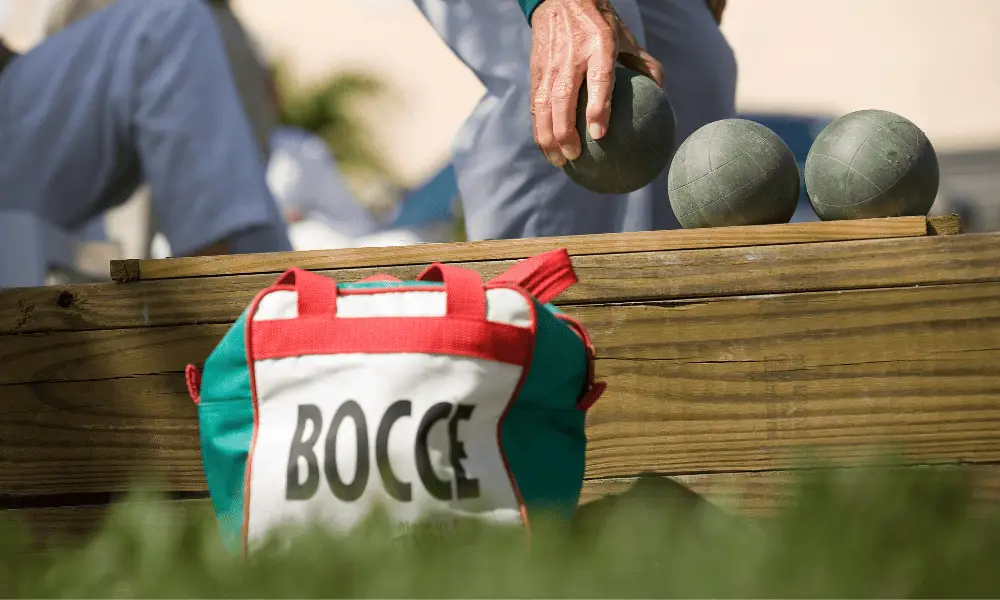
Maintaining a bocce ball court with artificial turf is straightforward, making it an ideal choice for those who want to enjoy the game of lawn bowling without having to invest in a natural grass court or other outdoor installations.
Artificial turf requires much less maintenance than traditional courts and is also low maintenance. All that’s needed is to periodically check the turf for any loose pieces or areas that may have become damaged due to wear and tear.
Additionally, it’s important to clean up any debris or crushed stone that may have accumulated on the surface of the court.
Inspections should be done regularly to ensure there are no signs of damage and that the playing surface is still level and even.
The synthetic fibers used in artificial turf are designed to stand up well against outdoor elements, so they’re unlikely to fade or become worn down over time.
This makes them a great choice for those looking for a long-term solution without having to constantly monitor their bocce ball court for signs of wear and tear.
Overall, artificial turf is an excellent option for those looking for low-maintenance bocce ball courts that will continue looking as good as new with minimal effort.
With proper care and regular inspections, these types of courts can provide years of enjoyment without needing any major repairs or replacements. Now that we’ve discussed maintenance requirements, let’s move on to assessing drainage needs.
Assessing Drainage Needs

It’s an exciting time when building a bocce court! But let’s not get ahead of ourselves. Before laying down the final thin layer of artificial turf, we must first assess our drainage needs.
We need to make sure that the base layer will allow for good drainage and not cause flooding when it rains. To do this, we can remove any dust or debris from the area and then fill it with a base layer such as oyster shells.
This will help keep moisture away from the surface and ensure that water is properly drained away.
The right amount of drainage is essential to make sure your bocce ball court is up to par. If done correctly, you’ll have a safe place to enjoy the game of bocce ball with friends and family for years to come.
Now that we’ve got a better understanding of how to assess our drainage needs let’s look at the pros and cons of DIY projects.
Pros And Cons Of Diy Projects
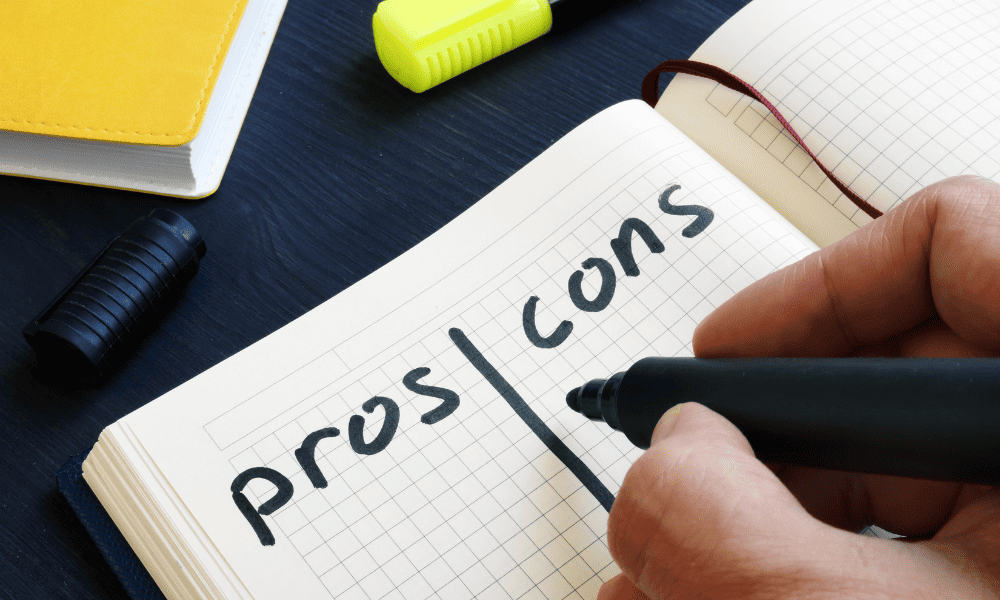
Carrying over from the assessment of drainage needs, one should consider the pros and cons of DIY projects when it comes to building a bocce ball court with artificial turf.
DIY projects can be great for homeowners who want to save money while still getting good-quality results. However, many things must be considered, such as the amount of time and effort involved in completing the project.
The following table outlines some of the main advantages and disadvantages associated with DIY bocce ball court installation:
| Advantages | Disadvantages |
|---|---|
| Minimal Bounce | Less Control Over Quality |
| Roll Smoothly | More Time Needed |
| Less Bounce | More Energy Required |
| More Cost-Effective Solution | Less Durability in Long Run |
It is important to remember that a professional installation will provide more control over the quality and durability of the bocce ball court surface.
On the other hand, if you have limited funds or prefer to do it yourself, then self-installation may be an option.
However, it is essential to weigh all options before beginning a project like this so that you get the best possible outcome.
Ultimately, when deciding between self-installation or hiring contractors, one should consider budget constraints as well as any other factors that could affect the successful completion of the project.
With careful planning and research, homeowners can choose what works best for them in order to build a bocce ball court with artificial turf they can enjoy for years to come.
Self Installation Vs. Contractors For a Bocce Ball Court
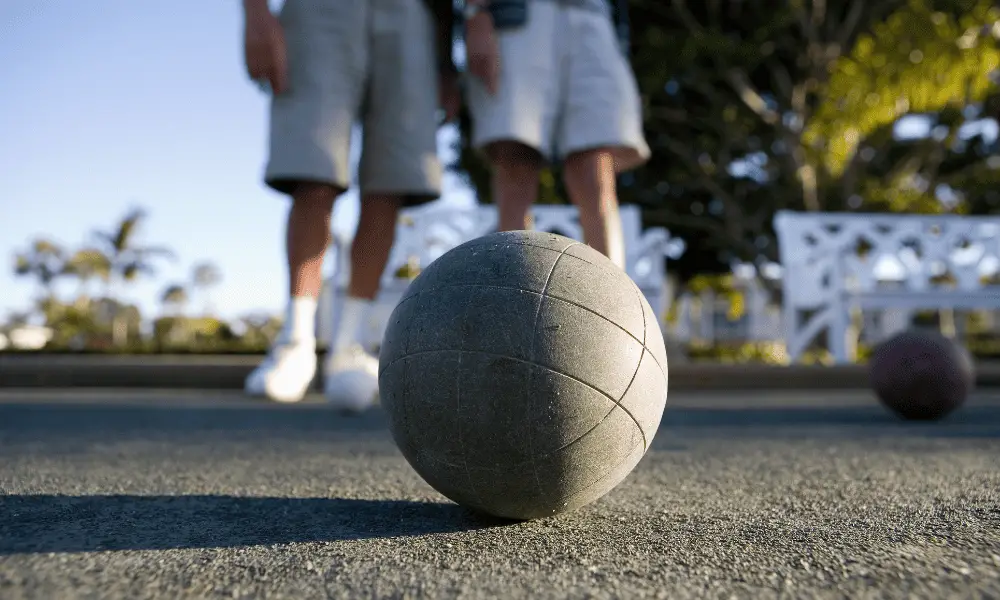
When it comes to building a bocce ball court with artificial turf, you have two options: self-installation or hiring contractors. It’s a no-brainer which one will give you the best bang for your buck. When considering which route to take, weighing the pros and cons is critical.
If you opt for self-installation, you’ll need to ensure that the surface is completely flat and free of any obstructions that could impede gameplay.
You’ll also need to make sure the turf has a short pile height and is made out of the best materials available so it lasts for years to come. Also, having a predetermined amount of bocce ball closest will help keep everyone safe while playing on your court.
On the flip side, hiring contractors may be more expensive but can save you time in the long run. Contractors typically have access to higher quality materials than what is available at home improvement stores, and they are experienced in creating perfectly level surfaces.
They can also provide advice on how much bocce ball closest is necessary for your specific court size and layout.
Ultimately, choosing between self-installation or contracting services depends on your budget, skill level, and preference for either DIY projects or having professionals manage the task for you.
Whichever route you choose, make sure to use the highest quality materials available so your court stands up against wear and tear over time.
Conclusion
My conclusion is that building a bocce ball court with artificial turf can be a great DIY project. You can take the time to design and install your own court while keeping within your budget.
It’s important to consider if you have the right tools and experience for this kind of job, as well as the necessary drainage requirements. There’s also the option of hiring a professional contractor if you don’t feel comfortable doing it yourself.
Overall, building a bocce ball court with artificial turf is an exciting endeavor that can bring years of joy, camaraderie, and entertainment. It’s a great way to bring people together from all walks of life to enjoy some outdoor activities.
As I embark on my own journey to build my court, I imagine it will become like a beautiful quilt where many stitches come together to make something special – just like what happens when friends come together over a fun game of bocce ball.
It’s amazing how something so simple can bring so much joy and pleasure! Building a bocce ball court with artificial turf is an investment in fun and friendship that will last for years to come.



